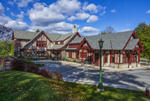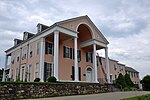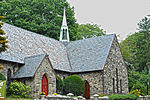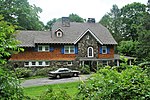Briarcliff Manor Union Free School District
The Briarcliff Manor Union Free School District is the public school district of Briarcliff Manor, New York. The district is an independent public entity, and is governed by the district Board of Education, whose members are elected in non-partisan elections for staggered, three-year terms. The board selects a superintendent, who is the district's chief administrative official. The district's offices are located in Todd Elementary School. The district has three schools: Todd Elementary School, Briarcliff Middle School and Briarcliff High School. It has about 1,535 students, and spends an average of $24,858 per pupil and has a student–teacher ratio of 11:1 (the national averages are $12,435 and 15.3:1 respectively). The district is a part of the Putnam-Northern Westchester Board of Cooperative Educational Services. The Briarcliff Manor UFSD won first place for the small district category of the 2008 Digital School Districts Survey and currently provided 1 to 1 devices to all students in grades 4 through 12.
Excerpt from the Wikipedia article Briarcliff Manor Union Free School District (License: CC BY-SA 3.0, Authors).Briarcliff Manor Union Free School District
Ingham Road,
Geographical coordinates (GPS) Address Nearby Places Show on map
Geographical coordinates (GPS)
| Latitude | Longitude |
|---|---|
| N 41.148 ° | E -73.8174 ° |
Address
Todd Elementary School
Ingham Road
10510
New York, United States
Open on Google Maps








